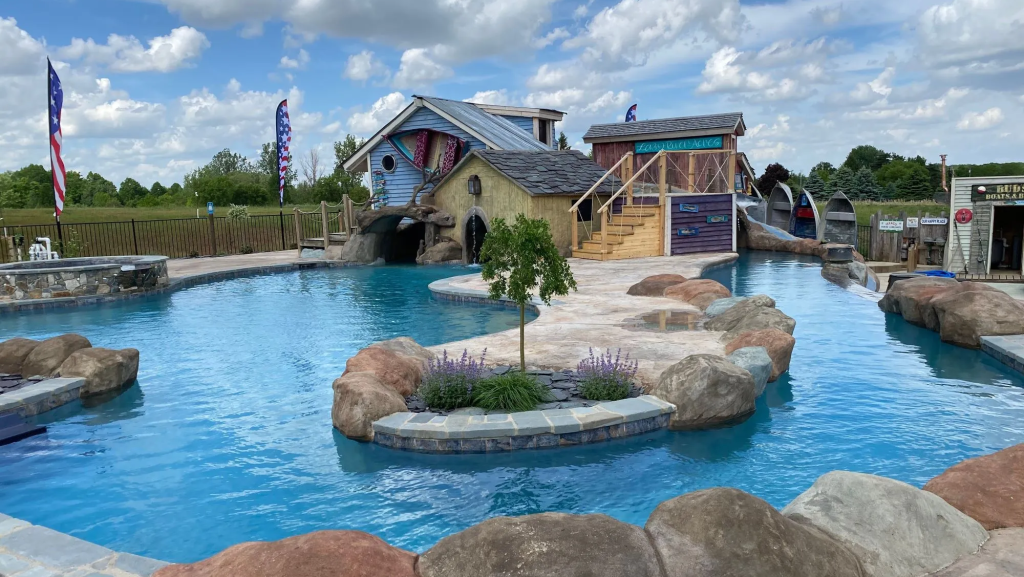On the commercial front, lazy rivers have become a standard addition to new aquatics facilities and resort poolscapes. While they may never reach that status in backyards, they are getting closer and closer, with designers adding them to non-concrete pools as well as concrete ones.
The very characteristics that make these features so alluring also require special design considerations when adding a lazy river to a project, both to customize the river for its users and to make it as safe as possible. Lazy rivers move tens to hundreds of thousands of gallons of water at typical speeds of 1 to 3 miles per hour, and they move people as well. Additionally, they take up a larger footprint than your average pool in order to create the full effect.
Question of space
With lazy rivers, the meandering is kind of the point, so they generally take up more space than the average pool. There are ways to save space, the most popular being to design it in a loop or circuit to reduce the footprint’s sprawl.
But the river needs to create at least the feeling of traveling, and should feel comfortable, so you can’t shortchange on space. Some say lazy rivers should have a minimum width of 6 feet, and depths starting at 3-1/2 feet. To figure out the best dimensions , find out how the clients plan to use the feature. If they plan to float on larger air mattresses, for instance, they’ll need more space than if using inner tubes. If they want to float down the channel in groups, as opposed to single file, they also will need more width. If they plan to use larger floating equipment or float in groups, designers should make the curves broader so users can smoothly change directions without bumping against the sides.
Accounting for the space not only involves the shell of the river itself. These installations involve more and bigger equipment than normal, vaults may be needed so non-self-priming pumps can be placed near water level, and significantly larger plumbing will be needed, often in the 10- and 12-inch range. So take extra time and care when estimating the space needed, and definitely consult with experts – whether they be experienced lazy-river designers or manufacturers – for at least your first few such projects.
Because of their scale and the systems required to move so much water, lazy rivers generally need more electrical power than most backyard pools, which may require a power upgrade to the property in a residential project.
Safety downstream
When learning how clients plan to use the river, find out how fast they want to move.
A more leisurely pace would have them moving about 1 to 2 miles per hour. If they want something a little more aggressive, it could go up closer to 3 mph.
Also ask how high the water should come up on children, keeping in mind that they will have to board the floating device in moving water and push out.
Ensure that users don’t bump into peripheral features such as rocks when they’re moving. Even at such slow speeds, collisions can hurt. Keep rocks and other elements out of the water and off the course – no rocks hanging over the coping. Bridges should leave plenty of clearance under them to allow floating heads without incident. And no hairpin turns – avoid abrupt changes to help keep people from scraping the walls.
Finally, with so many powerful pumps at work, designers can’t forget about entrapment prevention. Make sure the pool and system complies with the Virginia Graeme Baker Pool and Spa Safety Act.

